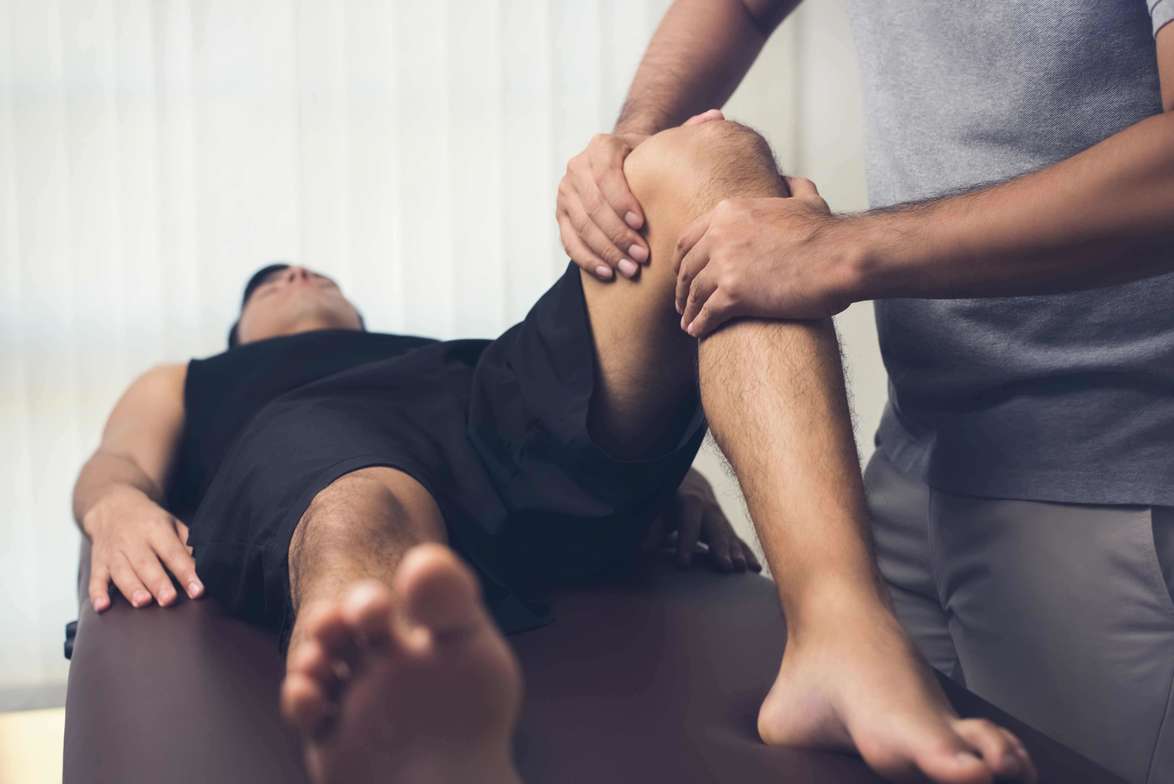
Your joints play a vital role in your body.
They connect bones, provide support, and help you move. When joints are damaged, either by injury or disease, it can cause significant discomfort and loss of function.
How do you avoid joint pain?
As with most things, prevention is the best cure.
Consider these tips to help prevent joint trouble.
1. Be Mindful of Bad Mechanics
Do you carry a heavy purse? What about sitting at your desk with poor posture, looking down at your phone for prolonged periods, or even wearing the wrong types of shoes? These can all have detrimental impacts on your joints and may cause what we refer to as a “repetitive stress injury.”
If you spend a lot of time at a desk, check out these tips on proper workstation set-up. Don’t stop there, though. Body mechanics matter throughout the day — in the car, at home, and even when you sleep.
Having the right bed and pillow, for instance, can make a big difference. Have someone look at you when you’re laying down and ensure that your spine and neck are aligned. Your bed should be firm enough to support you while still being soft enough to prevent joint strain.
Walking is another time many people struggle with their body mechanics. Make sure you are upright, with your shoulders back and your head above your shoulders. Don’t hunch your back or slouch. When you are mindful of your body’s posture and alignment, you can avoid a lot of pain.
2. Watch Your Weight
Extra pounds will add additional stress to your joints - causing them to wear faster. Joints in the knees, hips, and ankles are especially at risk. You can drop pounds with a healthy diet and regular exercise.
Simply begin where you are and gradually increase your daily movement. You can also work with a nutritionist to set up a diet plan that makes sense for your specific needs.
It’s important to lose weight in a healthy way — doing fad diets or losing weight too fast can cause stress on your body in lots of ways, which will make things worse.
3. Incorporate Low-Impact Exercises Into Your Routine
When you get ready to exercise, you might worry about damaging your joints. Many common workouts put a lot of stress on knees, ankles, and other joints.
Swimming, cycling, yoga, and walking are all activities that are relatively joint-friendly and will also help you maintain a healthy weight. Be sure to include strength training as well, using proper form to protect your back. Strong muscles help support your joints and protect them from daily stressors.
It can be challenging to fit exercise into an already busy schedule. Think about fitting in 10 minutes at a time to start. You can do this first thing in the morning before your day gets away from you.
That gives you a chance to start your day off right and can boost your energy as well. As you get stronger and the habit of working out regularly develops, you can lengthen your workout time until you’re doing at least 30 minutes a day.
4. Don’t Smoke
Another harmful habit to consider ditching is smoking. Research shows that individuals who smoke have an increased risk of developing osteoarthritis and other bone problems.
Giving up smoking isn’t easy, and you don’t want to replace one bad habit with another. Instead, look at the stressors in your life that cause you to want to smoke.
Find ways to minimize those triggers, and when they do happen, create a strategy to deal with them without tobacco. When you replace your smoking habit with healthy behaviors that help you manage that stress, you’ll be better off mentally and physically.
5. Eat a Nutrient-Dense Diet
Not only will eating healthy help ward off unwanted weight, but nutritious foods can also help fight inflammation. Different foods have different nutrients, so it’s important to avoid fad diets and eat various fruits, vegetables, meats, and healthy carbs. One way to get a variety of nutrients into your meals is to “eat the rainbow.”
Different foods have different colors because of the vitamins and minerals they contain.
Consider trying to incorporate at least three different colors into each meal. You can use a variety of vegetables and fruits to achieve this goal.
Start Early to Avoid Joint Pain
Joint pain becomes more common as we age, so early attention is crucial.
The more of these steps you can implement today, the better! At the same time, be sure to get help when you need it. If you’re experiencing joint pain, give our office a call.
We can help you identify the culprit and start a treatment plan that will get you back on track.





